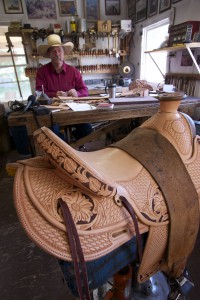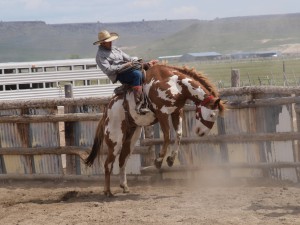
Buckaroo culture is rooted in a rich history of vaquero tradition which stretches all the way back to Moorish Spain. Arab and Berber horsemen brought their techniques to Spain in 711 when the Moors conquered the Iberian peninsula. Their dynamic horsemanship allowed them to outmaneuver Spanish, who would later adopt their methods of fighting on horseback. Moorish control lasted for seven centuries and influenced all aspects of Spanish culture. In the early 1500s, the Spanish introduced el rancho practices to Mexico. Two centuries later, vaqueros moved north and west, leading to the development of the buckaroo lifestyle in the Great Basin. Today, the term “buckaroo” is often used to describe a rancher who works exclusively on horseback.

Cowboy historian Jim Hoy writes, “if one considers the buckaroo an artist, then his primary medium is the horse.” While plains cowboys start colts at 2-3, it is not uncommon for buckaroos to wait until a horse is 4-5 to begin training. Buckaroos use the hackamore training system before introducing the bit and break horses by roping, saddling, and letting them buck. Bronc riding began in this way as useful skill on the range but has since evolved into a public competition and mainstay of rodeo events across the country.
